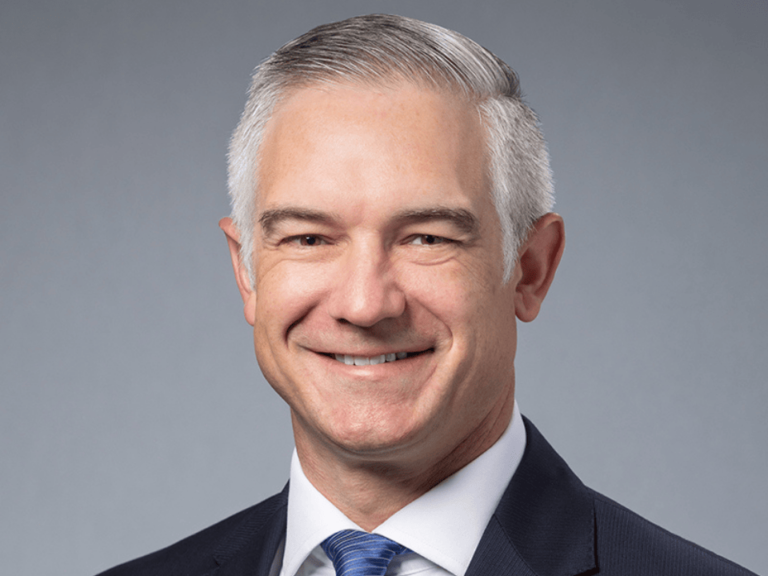For the first time in U.S. history, the White House will soon be occupied by a president who has demonstrated a deep understanding of cancer research.
In January 2016, seven months after his 42-year-old son, Beau, died from brain cancer, then Vice President Joseph Robinette Biden Jr. became the catalyzing force behind the Moonshot, an effort to understand the intricacies of cancer, and find cures.
In the final year of Barack Obama’s presidency, Biden channeled the might of the White House into finding better, faster ways to bring discoveries from the bench to human trials, and through FDA, to patients with cancer.
The National Cancer Moonshot Initiative was formed with Biden as its principal visionary. Initially, the program’s stated goal was to “end cancer,” but with time, it was softened to doubling the rate of progress—achieving 10 years of progress within five years.
For 11 months, Biden was a regular presence at cancer centers, meetings of professional societies, federal health agencies, pharmaceutical companies, and policy-wonk talkathons.
A theme quickly emerged in Biden’s talks: Why not help these smart people to work together, instead of against each other? More than anything, the Moonshot was about eliminating “silos” and “firewalls.”
Biden dove deep into oncology, focusing on the obstacles to sharing data, the need for an interoperable language for patient health records, and the benefits of a dedicated center for cancer regulatory science at FDA.
The Moonshot legislation, which was ultimately folded into the 21st Century Cures Act of 2016, became central to Biden’s political legacy during the Obama administration. Through the Cures Act, Biden’s efforts led to authorization of $1.8 billion over seven years for cancer research, as well as $500 million over a decade for FDA to streamline drug and device approval processes.
The 2016 Moonshot was successful at achieving at least two of its primary objectives:
- Putting NCI in charge of dispensing the monies, based on scientific guidance from the Blue Ribbon Panel. That panel prioritized 10 opportunities in cancer research with the goal of doubling the rate of progress (The Cancer Letter, Sept. 9, 2016).
- Creating the FDA Oncology Center of Excellence, which is intended to consolidate the agency’s cancer portfolio and streamline regulatory pathways for cancer-related drugs, biologics, and devices. The Cures Act also authorized additional dollars for FDA to enable competitive recruiting and to make changes to FDA’s regulatory processes. This included a mandate to develop novel clinical trial designs and use real-world evidence (The Cancer Letter, Dec. 16, 2016).
- The Cancer Letter‘s coverage of the Moonshot appears here.
Now, President-elect Biden prepares to become President Biden as the nation marks the 50th anniversary of the National Cancer Act of 1971. Congressional support for cancer research is strong and bipartisan, and NCI is building a coalition focused on raising the institute’s payline to 15% by 2025 (The Cancer Letter, Oct. 16, 2020).
Becoming 46
An argument can be made that cancer has shaped the current phase of Biden’s political career, including his rise to the highest office in the land.
Grief-stricken, Biden missed an opportunity to run for president in 2016.
However, in December 2016, 18 months after Beau’s death, the U.S. Senate voted to approve the 21st Century Cures Act.
In a show of bipartisan solidarity, Senate Majority Leader Mitch McConnell (R-KY) and then-Minority Leader Harry Reid (D-NV) renamed the National Cancer Moonshot Initiative the Beau Biden Cancer Moonshot—and placed it at the top of the nearly 1,000-page Cures Act (The Cancer Letter, Dec. 10, 2016).
As he was leaving the Senate chamber following the vote, Vice President Biden had a tissue in hand that a clerk had given him.
The Moonshot was part of his grieving process. Now that the Moonshot was done, enacted by Congress, with money soon to follow. What would Biden do next?
It was there that Biden told reporters he would run for president in 2020.
“You know, we’re going to run with that,” said one reporter.
“Go ahead,” Biden said.
Today, the former long-time senator from Delaware is preparing for a transition into the White House as the 46th president of the United States.
Cancer historians should note that Biden is the second non-incumbent vice president to be elected president, after Richard Nixon in 1968, the president who signed the National Cancer Act.
Cancer isn’t the most urgent element on Biden’s 2021 agenda. He faces the daunting task of steering the nation through a trifecta of polarizing issues that contributed to President Donald J. Trump’s defeat: the pandemic, the COVID-19 recession, and public outrage over police brutality and racial inequity.
“More Money for Cancer Research” doesn’t appear on the to-do list, which features prominently on his presidential transition website. But, one can expect the 2021 White House to do more for oncology—or at least show more in-depth understanding of cancer science, policy, and politics—compared to any other administration in recent history.
To the Moon
The timeline of the Beau Biden Cancer Moonshot begins on Jan. 12, 2016. In his seventh and final State of the Union address, Obama announced a new White House initiative to “cure cancer” (The Cancer Letter, Jan. 16, 2016).
“I’m putting Joe in charge of mission control,” Obama said. “Last year, Vice President Biden said that with a new moonshot, America can cure cancer. Last month, he worked with this Congress to give scientists at the National Institutes of Health the strongest resources they’ve had over a decade.”
Biden was involved in securing a $264 million increase to NCI’s budget, the largest increase in over a decade of flat budgets and decreasing purchasing power. It was the beginning of a bipartisan effort that delivered $11.6 billion in new funding for NIH over five years—a 39% increase (The Cancer Letter, July 10, 2020, April 6, 2018).
As the Obama administration’s Cancer Wonk-In-Chief, Biden participated in roundtables, delved into thorny questions, sought guidance, threatened consequences, but mostly cajoled political appointees, career scientists, academics, and industry leaders into getting things done.
“The impediment isn’t the lack of the gray matter genius and ingenuity in terms of new drugs, new treatments, etc.,” Biden said at the time at a Moonshot summit in Washington, D.C. (The Cancer Letter, June 1, 2016). “It’s all this stuff that gets in the way.”
Healthcare organizations and health IT companies jostled for invitations to Biden’s events and lobbied the Moonshot Task Force to have the vice president mention them by name in his speeches.
He issued challenges, with a Bidenesque twinkle in an eye and the Bidenesque finger-point:
“You’re not going to like this, but imagine if you all worked together,” he said at the 2016 annual meeting of the American Society of Clinical Oncology, where he lamented the siloed nature of the for-profit rat race in health informatics (The Cancer Letter, June 10, 2016). “I’m not joking! Imagine if you all worked together.”
In that speech, Biden named specific initiatives: ASCO’s CancerLinQ, the American Association for Cancer Research’s Project GENIE, M2Gen’s ORIEN—and NCI’s Genomic Data Commons, which he designated as the foundation for creating a federated framework and for setting data standards.
The prevailing wisdom was—and continues to be—that interoperability and rapid exchange of data is key to improving patient care, and speeding up discovery and translational research in the 21st century. This has proven to be especially salient today, as scientists and public health institutions scramble to respond to the COVID-19 pandemic, while healthcare systems scale up their telemedicine capabilities (The Cancer Letter, March 20, March 27, May 1, 2020).
In his Moonshot speeches, Biden frequently bemoaned the state of affairs in oncology bioinformatics:
“You’re all doing the same thing!” he said at a May 2016 roundtable discussion at Memorial Sloan Kettering Cancer Center (The Cancer Letter, June 3, 2016). “I find it curious. I don’t know if that’s the only way that it can be done.”
Acknowledging a screw-up
It was a lack of imagination that led to the dearth of standardization in U.S. health data infrastructures, Biden said often.
Here, he admitted to a screw-up: The Obama administration had inadvertently created “firewalls” when it sought to jumpstart the post-2008 economy with the American Reinvestment and Recovery Act of 2009.
“So, one of the things we did, everybody talked about electronic recordkeeping for docs and it being able to be easily transferred, and we came up with $35 billion in that legislation—before the Affordable Care Act—to accommodate doctors being able to transition to electronic records,” Biden said at the MSK roundtable (The Cancer Letter, June 3, 2016). “All $35 billion was spent, but the ability to communicate, aggregate that data, unlike the human genome, [there was] no agreed-to vocabulary—oh, you’ve got a broken femur, I’ve got a broken leg—the computer doesn’t pick it up.”
Biden’s deft politicking and inexhaustible cheerleading galvanized the cancer research community.
By bringing something as arcane as cancer informatics to the forefront of the White House’s priorities, he arguably refocused budgets at cancer centers and pharmaceutical companies, sharply increasing investment in data science and analytics, computational biology, as well as in artificial intelligence and machine learning.
Startups blossomed. Competition between health IT companies in oncology suddenly became fodder for water cooler conversations, as each group hustled to grow their share of partner hospitals, attract pharma money, create proprietary algorithms, and develop partnerships with FDA.
The Moonshot’s goal to realize a data federation maintained its momentum at NCI during the Trump administration as well.
In March 2019, NCI Director Ned Sharpless announced the creation of the Childhood Cancer Data Initiative—a pilot project of sorts that can be used as proof of concept for scaling up into a fully-fledged comprehensive cancer data federation (The Cancer Letter, March 8, 2019).
“We envision this to be a very high-grade dataset that will be useful for real cutting-edge translational and basic research,” Sharpless said at the time to The Cancer Letter. “This quality, this size, this scope doesn’t exist in any area of biomedical research.
When the president asked me … at the State of the Union to head the Cancer Moonshot, we said we were going to ask you all for significant funding increases at the NIH and the NCI,” Biden said at the signing ceremony of the Cures Act (The Cancer Letter, Dec. 16, 2016). “And you all stepped up again, Republicans and Democrats.
Joe Biden
“And so, this is an important first step in learning how useful radical data sharing and aggregation can be. Therefore, we really expect it to inform not just childhood cancer, but every kind of cancer.”
In 2021, NCI will run a campaign to mark the 50th anniversary of the National Cancer Act. The campaign’s tagline—“Nothing will stop us”—will be made available to cancer centers, professional societies, and others. The Cancer Letter will take part in this initiative.
“With your help, this commemoration can become a movement to coalesce support around our common goals,” NCI Director Ned Sharpless said Oct. 13 during the virtual annual meeting of the Association of American Cancer Institutes and Cancer Center Administrators Forum.
If all goes well with his transition into the Oval Office, Biden would be in a position to bring presidential focus to NCI’s campaign.
Moreover, Biden is expected to undo Trump-era domestic policies that may threaten American leadership in biomedical research and the federal government’s ability to respond to public health crises—including a recent executive order that would strip civil service and due process protections for some federal employees (The Cancer Letter, Nov. 6, 2020).
With a vaccine for SARS-CoV-2 on the horizon, a Biden presidency would amplify already steadfast support for biomedical and cancer research—his track record of working across party lines may come in handy at a time of calcifying political allegiances.
“When the president asked me … at the State of the Union to head the Cancer Moonshot, we said we were going to ask you all for significant funding increases at the NIH and the NCI,” Biden said at the signing ceremony of the Cures Act (The Cancer Letter, Dec. 16, 2016). “And you all stepped up again, Republicans and Democrats.”
Many things have changed in the ensuing four years, but congressional support for NIH remains intact.
“President-elect Biden’s experience and leadership in many areas of cancer research will clearly be extremely important and helpful to the entire medical research community,” Antoni Ribas, president of the American Association for Cancer Research and director of the UCLA Jonsson Comprehensive Cancer Center Tumor Immunology Program, wrote in a guest editorial in this issue of The Cancer Letter.
“Having the Biden-Harris team at this propitious time is very important to the conquest of these diseases that afflict so many Americans.”













